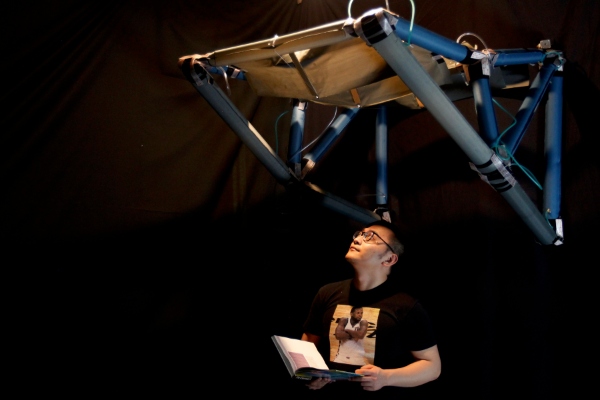Input, Output and Construction Methods for Custom Fabrication of Room-Scale Deployable Pneumatic Structures
abstract
We examine the future of designing room-scale deployable pneumatic structures that can be fabricated with interactive capabilities and thus be responsive to human input and environments. While there have been recent advances in fabrication methods for creating large-scale structures, they have mainly focused around creating passive structures. Hence in this work, we collectively tackle three main challenges that need to be solved for designing room-scale interactive deployable structures namely -- the input, output (actuation) and construction methods. First, we explore three types of sensing methods --- acoustic, capacitive and pressure --- in order to embed input into these structures. These sensing methods enable users to perform gestures such as knock, squeeze and swipe with specific parts of our fabricated structure such as doors, windows, etc. and make them interactive. Second, we explore three types of actuation mechanisms -- inflatable tendon drive, twisted tendon drive and roll bending actuator -- that are implemented at structural scale and can be embedded into our structures to enable a variety of responsive actuation. Finally, we provide a construction method to custom fabricate and assemble inter-connected pneumatic trusses with embedded sensing and actuation capability to prototype interactions with room-scale deployable structures.
reference
Saiganesh Swaminathan, Michael Rivera, Runchang Kang, Zheng Luo, Kadri Bugra Ozutemiz, and Scott E. Hudson. 2019. Input, Output and Construction Methods for Custom Fabrication of Room-Scale Deployable Pneumatic Structures. Proc. ACM Interact. Mob. Wearable Ubiquitous Technol. 3, 2. https://doi.org/10.1145/3328933

